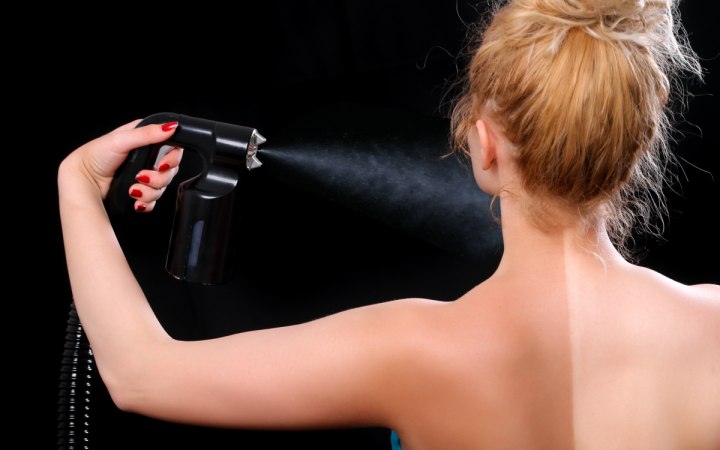Indoor Tanning

Q: I think I have between skin type 1 and 2 and have been trying to tan indoors. I am taking it really slow and am up to 10 minutes without burning but I just don't know if it is working. Is there a point when I should just give up or should I keep going? Is there anything I can do to help the process?
A: Being completely candid with you, I would have advised you to never start trying to tan your skin if I had had such opportunity. Particularly with your skin type, you are risking serious problems with your skin from such exposure to UV radiation.
Another study showed that people exposed to 10 full-body tanning salon sessions had a significantly increased level of skin repair proteins which are typically associated with damaged skin. This indicates that tanning indoors is just as dangerous as UV from the sun. In 2002, a Dartmouth School study showed that tanning device users had 2.5 times the risk of squamous cell carcinoma (the second most common form of skin cancer) and 1.5 times the risk of basal cell carcinoma (the most common form of cancer).
The tanning industry relies on two misleading arguments: one, that since melanoma is caused by sunburn, controlled tanning helps prevent melanoma by building up protective melanin pigments, and two, that UV exposure helps the skin produce vitamin D which helps prevent breast, prostate, and colon cancers. Experts refute these claims, explaining that our diet (particularly if we eat dairy products and salmon) provides more than we need of vitamin D. They also explain that trying to increase melanin by tanning is counterproductive, since tanning is just as damaging to the skin as burning.
You should also be aware that it requires far less sunlight to produce all the vitamin D that your body could possibly use than it takes to get a tan for even the most tan-prone skin types.
My recommendation is to look for sunless tanning products. Either professionally applied spray-on tans at a salon, or one of the many “glow” products now available. These are lighter formula self-tanners designed for lighter skin tones. In any case, avoid the darker shades of sunless tanners since these may tend to become “orange” on very fair skin types.
Please understand that I don’t intend the above statements to be a rebuke of your attempts to look more healthy and vital from tanning. Our media and society often generate ideals of beauty that are less than healthy in retrospect. I’m simply happy for the opportunity to advise you toward a safer alternative. I wish you the very best.
(NOTE: The above referenced information on medical studies and tanning facts was obtained from the Skin Cancer Foundation website and the website of the Food and Drug Administration of the U.S.)
© Greatestlook.com
Photo: Tcsaba/Shutterstock
See also:
How tanning works
Is tanning dangerous?